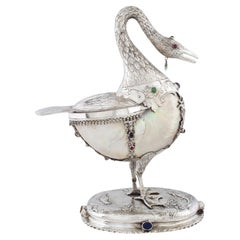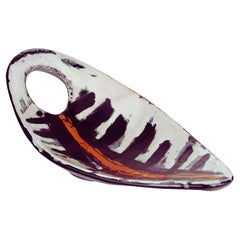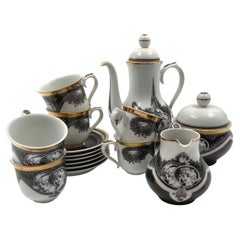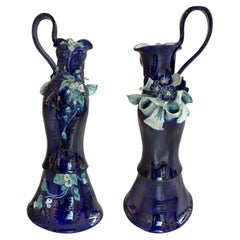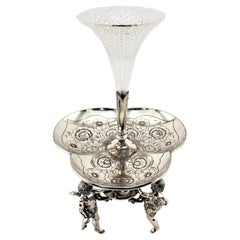Hungary - Serveware, Ceramics, Silver and Glass
1880s German Antique Hungary - Serveware, Ceramics, Silver and Glass
Silver
1960s Hungarian Mid-Century Modern Vintage Hungary - Serveware, Ceramics, Silver and Glass
Ceramic
1980s Hungarian Vintage Hungary - Serveware, Ceramics, Silver and Glass
Porcelain
2010s Hungarian Hungary - Serveware, Ceramics, Silver and Glass
Ceramic
1960s American Other Vintage Hungary - Serveware, Ceramics, Silver and Glass
Glass
1960s Vintage Hungary - Serveware, Ceramics, Silver and Glass
Art Glass, Blown Glass
19th Century Czech Art Nouveau Antique Hungary - Serveware, Ceramics, Silver and Glass
Crystal, Gold
1950s Vintage Hungary - Serveware, Ceramics, Silver and Glass
Early 20th Century American Late Victorian Hungary - Serveware, Ceramics, Silver and Glass
Silver Plate
1950s Italian Vintage Hungary - Serveware, Ceramics, Silver and Glass
Murano Glass
19th Century French Antique Hungary - Serveware, Ceramics, Silver and Glass
Porcelain
19th Century German Rococo Antique Hungary - Serveware, Ceramics, Silver and Glass
Silver
Early 20th Century Spanish Art Deco Hungary - Serveware, Ceramics, Silver and Glass
Silver
1960s German Mid-Century Modern Vintage Hungary - Serveware, Ceramics, Silver and Glass
Crystal
Late 19th Century Northern Irish Victorian Antique Hungary - Serveware, Ceramics, Silver and Glass
Porcelain
2010s Italian Hungary - Serveware, Ceramics, Silver and Glass
Porcelain
2010s Danish Hungary - Serveware, Ceramics, Silver and Glass
Stoneware
2010s Danish Hungary - Serveware, Ceramics, Silver and Glass
Stoneware
2010s American Modern Hungary - Serveware, Ceramics, Silver and Glass
Ceramic, Stoneware
Read More
How the Chunky, Funky Ceramics of 5 Mid-Century American Artists Balanced Out Slick Modernism
Get to know the innovators behind the pottery countercultural revolution.
Ready for a Cinderella Moment? This Glass Handbag Is a Perfect Fit
Glass slippers might be the stuff of fairytales, but glass handbags? Artist Joshua Raiffe has made them a reality, and they're far less delicate than you might imagine, but just as dreamy.
With Dansk, Jens Quistgaard Delivered Danish Simplicity to American Tables
When a visionary Copenhagen designer teamed up with an enterprising Long Island couple, Scandi-style magic landed in kitchens and dining rooms across the United States.
Hostess Extraordinaire Aerin Lauder Shares Entertaining Tips and Auction Picks
The arbiter of good taste, who has curated a collection for 1stDibs Auctions, invites 1stDibs inside her family’s Hamptons barn for a firsthand look at her welcoming style.
Handmade with Lab-Grade Glass, This Decanter Holds Your Favorite Cocktail Concoctions
Artist Simone Crestani conjures the fascination you remember from Chemistry 101.
28 Cheerful Home Bars, Where Everybody (Literally) Knows Your Name
Simple or sophisticated, equipped with console, cart or custom cabinetry, these stylish bar areas deserve a toast.
Meet the Celebrated Hostess Whose Magical Tabletops Enhance Every Occasion
For Stephanie Booth Shafran, entertaining guests is about opening her heart as well as her home.
How to Identify Real Capodimonte Porcelain
Early examples by the Italian manufacturer can be hard to come by, but the best later pieces possess the same over-the-top charm.
